- News
- Reviews
- Bikes
- Components
- Bar tape & grips
- Bottom brackets
- Brake & gear cables
- Brake & STI levers
- Brake pads & spares
- Brakes
- Cassettes & freewheels
- Chains
- Chainsets & chainrings
- Derailleurs - front
- Derailleurs - rear
- Forks
- Gear levers & shifters
- Groupsets
- Handlebars & extensions
- Headsets
- Hubs
- Inner tubes
- Pedals
- Quick releases & skewers
- Saddles
- Seatposts
- Stems
- Wheels
- Tyres
- Tubeless valves
- Accessories
- Accessories - misc
- Computer mounts
- Bags
- Bar ends
- Bike bags & cases
- Bottle cages
- Bottles
- Cameras
- Car racks
- Child seats
- Computers
- Glasses
- GPS units
- Helmets
- Lights - front
- Lights - rear
- Lights - sets
- Locks
- Mirrors
- Mudguards
- Racks
- Pumps & CO2 inflators
- Puncture kits
- Reflectives
- Smart watches
- Stands and racks
- Trailers
- Clothing
- Health, fitness and nutrition
- Tools and workshop
- Miscellaneous
- Buyers Guides
- Features
- Forum
- Recommends
- Podcast
review
£7,000.00
VERDICT:
A technical masterpiece in engineering and development, which is reflected in the price
Weight:
6,350g
Contact:
At road.cc every product is thoroughly tested for as long as it takes to get a proper insight into how well it works. Our reviewers are experienced cyclists that we trust to be objective. While we strive to ensure that opinions expressed are backed up by facts, reviews are by their nature an informed opinion, not a definitive verdict. We don't intentionally try to break anything (except locks) but we do try to look for weak points in any design. The overall score is not just an average of the other scores: it reflects both a product's function and value – with value determined by how a product compares with items of similar spec, quality, and price.
What the road.cc scores meanGood scores are more common than bad, because fortunately good products are more common than bad.
- Exceptional
- Excellent
- Very Good
- Good
- Quite good
- Average
- Not so good
- Poor
- Bad
- Appalling
With its vibration-absorbing 780g frame, the new Bianchi Specialissima showcases what can be achieved with technology and engineering, and counters the often-heard argument that the UCI's rigid restrictions stifle advancement in bicycle frame development. Making a lightweight bike is relatively easy – you just remove plenty of material – but making something light yet as stiff and responsive as the Bianchi is a real masterstroke.
The whole build may only weigh 6.35kg (14.0lb) but the second you stand hard on those pedals the Specialissima responds in an instant. You don't often feel a delay in a bike, but when you ride the Bianchi the first thing you notice is that there isn't one.
Find your nearest dealer here
Buy this online here
Acceleration is phenomenal – power down, the legs spin, 'snick', the chain drops a cog and the Specialissima surges forward, optimal cadence is passed, 'snick' again, and the whole process recurs. It becomes addictive and so much fun that you actually look forward to stopping so you get to do it over and over again.
Moving in the opposite direction on the cassette, the difference is even more marked. That light weight obviously makes the Bianchi a climber's tool, and once you hit the ascents a single change to an easier sprocket feels the same as a jump of three on a bike that's 3-4lb heavier. This makes keeping your cadence in the hills smooth and consistent, and should you need to make a jump in a race it gives you that surprise factor.
Smooth and settled
The Specialissima uses what Bianchi has named CounterVail (we'll get to that later) to soak up impacts from the road before they pass through the frame to the rider. While it's noticeable on the flat, it's on the descents where it really becomes your friend.
The CounterVail soaks up road vibration, all that little buzz that you don't really pay attention to, but once it's gone it's a marked improvement. It means you can get on with the business in hand of getting the bike to the bottom of the hill as quickly and as easily as possible.
In fact, Bianchi actually says 'the new CounterVail ultra-light carbon formula is tuned to smooth out the inherent nervousness of ultra-light frames', and that's exactly what it does. Other bikes I've ridden at this weight can be twitchy at speed, becoming, as Bianchi says, nervous and a little bit floaty, taking an extra level of concentration and commitment to stop the product of your life savings ending up in the nearest wall.
The benefits are noticeable, especially towards the end of an 80-mile ride. You don't get so much fatigue in the arms and upper body, plus you don't have to concentrate on the bike so much; taming it on rough roads you can just let it go and do its thing while you just enjoy the ride.
Impressive stiffness levels
Other than the carbon layup itself, a lot of the stiffness comes from the tube profiles. It's a common theme: increase the size of those running along the bottom of the frame to cope with power transfer, while leaning out the upper half for rider comfort.
Starting at the front, the head tube is tapered from a standard 1 1/8in upper race to 1 1/4in at the fork crown. This sharpens the handling which, when paired with the CounterVail stuff, is tight and responsive – aim the Bianchi where you want to go and that's the line it takes, no fuss, no bother.
Bianchi hasn't gone super-light with the fork at 340g, and I reckon that's a sensible option. The frame can carry a lot of speed into the bends so you need something solid and secure between you and that front wheel, and that is exactly what you get. No chatter under braking or flex when banked over in the bends, yet it's not so stiff that it rattles your teeth.
The larger lower portion of the head tube allows for a larger surface area to attach the down tube so this can be increased in diameter too; well, I say diameter but technically the tube isn't round, more of a squared off oval, morphing as it continues towards the bottom bracket area.
Here Bianchi has gone for BB86 Press-Fit bearings. Thanks to the bearing cups being pressed into the frameset instead of sitting externally, the BB shell width can be increased from the standard 68mm to 86.5mm without really affecting the Q-factor, the distance between the cranks.
That extra width simply means a larger surface area to attach the down tube, seat tube and the chainstays to and it's the latter where Bianchi has really exploited things. The chainstays are huge in a vertical plain as they leave the bottom bracket, meaning a huge amount of stiffness under power; you won't feel even the slightest hint of flex as you mash the pedals.
As they head towards the rear dropouts they taper massively; add this to the slender seatstays completing the junction and you get a rear wheel that stays planted to the road thanks to a bit of compliance. There's no point laying all that power down through the cranks if you can't get it through to the tarmac thanks to a tyre skittering about all over the place.
This compliance is passed up through to the rider via those aforementioned seatstays, enhanced by a 27.2mm diameter seapost allowing a little more flex than a 31.6mm version (which also keeps the weight down a couple of grams).
Let's get technical
So, the CounterVail is shock absorbing, but what exactly is it? We'll hand that one over to Bianchi: 'A patented viscoelastic carbon material with a unique fibre architecture that cancels up to 80% of vibrations while increasing the stiffness and strength of our carbon frames and forks.'
The CounterVail layer is then sandwiched between layers of high modulus carbon fibre in the Specialissima's construction. It's not a new thing created for this model – it's been around for a while in Bianchi's Infinito CV (endurance) and Aquila CV (TT/triathlon) bikes.
The frames themselves have internal cable routing, making them compatible with both electronic and mechanical groupsets by way of various entry and exit points depending on which direction you go. You may notice that our mechanical version runs the rear cable externally along the chainstay through a guide; it's removable, though, so should you change to Di2 or EPS you won't have a random cable stop just sat there spoiling the aesthetics.
High modulus carbon fibre is used throughout the frame and fork, which is how Bianchi achieves the impressive weight versus stiffness ratio. High modulus carbon fibres go through more processing than standard fibres, meaning they are smoother and more round, which in turn means you can pack more fibres into the same area, creating more stiffness per cross sectional area. You then have the option of creating the same stiffness but with less material, or the same amount of material for greater stiffness. The more processed the fibres, the more brittle they become – which is why a clever designer will use varying grades and directions to really dial in the ride from the frame and fork.
In that quest for ultra-light weight, even the dropouts are full carbon fibre, though they do have small metallic inserts where the quick release spindles touch, for longevity.
The Specialissima is built to order so there can be a bit of a wait, up to 12 weeks if a dealer doesn't have one in stock. It has to be hand-painted too, which includes all of the logos, so you can see where the time and money goes. And if you don't want raw black or this celeste finish you can customise your paintjob too, if you go for the Tavolozza Program. It costs an extra £350, mind.
Coming straight from the peloton, the geometry of the Specialissima is long and low. The 55cm model we've got here has an effective top tube length of 550mm, and a seat tube length the same. Up front the head tube is 140mm with a 72.5-degree angle, resulting in a stack height of 545mm, with reach being 388mm. This results in a stack to reach ratio of 1.4, bang on for a lightning quick, fast handling race machine (stack and reach are the vertical and horizontal measurements from the centre of the bottom bracket to the top of the head tube).
The seat tube angle is 73 degrees, which puts you in a slightly more forward position on the saddle, opening up your hip angle. This allows for better power transfer in the drops than you could achieve on an endurance bike with slacker angles for instance without compromising breathing. A typical race bike. It's most noticeable on those long, flat roads when you're pushing into a nagging headwind. Couple the seating position with the geometry above and you'll find yourself in the drops powering the cranks without feeling cramped.
Entry-level kit...
...well, it is in the world of Specialissima ownership. Ignoring all of the 'Should be Campag' comments, you can't ignore the fact that mechanical Shimano Dura-Ace is a beautiful piece of kit, and the Bianchi really needs something as quick shifting and decisive to complement the speed and acceleration of the frame.
This test model was set up with a semi-compact crankset, which means ring sizes of 52/36 teeth. When paired with the 11-speed 11-28t cassette, this gives a large spread of gears to cover the hills both up and down as well as cruising on the flat.
>> Check out our guide to the best 2016 sportive and endurance bikes here
The Dura-Ace dual-pivot callipers have a huge amount of power thanks to the stiff brake arms. The cable pulls and the pads clamp the wheel rim confidently. It's a crisp motion, with no squishiness as the callipers flex once full bite is achieved. Thanks to this, modulation is simple as you can always feel how much power you're applying to the rim.
Those rims are part of Fulcrum's Zero Nite aluminium clinchers. Priced at just over a grand, they are right at the upper edge of what you'd expect to pay for an alloy wheel. Admittedly, they do look like carbon until you get up close, which is due to the Plasma treatment's black finish. This finish adds a hardwearing coating to the rim for longevity and protects the grooved rim, which is said to remove water quicker for wet weather braking. The grooves are only small, but like those found on Mavic's Exalith rims they also help the pad bite. You must use carbon pads with the Fulcrums, though, and the rims do tend to get through a set pretty rapidly.
A set of wheels weighing 1420g would normally stand out on any frameset, but here they match the lightweight Bianchi's frame, with both complementing each other, sharing the limelight if you like. They work together, delivering blistering acceleration and a smooth ride. You also get ceramic bearings and carbon fibre hub bodies, plus the added touch of reflective decals.
The Fulcrums are wrapped with Vittoria's Rubino Pro Speed tyres, in 23mm width – it is a race bike after all. With a claimed weight of 180g they are certainly light, but they don't sacrifice performance or longevity for it. Three differing compounds mean great rolling resistance, responsive cornering grip and no issues with puncturing.
The rest of the finishing kit is pretty top end, with FSA supplying its K-Force range for the seatpost, stem and handlebar. It's all carbon fibre so offers a bit of extra damping, and it was nice to see a little flex from the handlebar; it can be unnerving at first if you're used to stiff alloy components but you soon get used to it.
The seatpost needed a liberal application of carbon gripper to stop it slipping, and I replaced the original titanium bolt with a steel one. I'm all for saving a few grams but titanium bolts are, to my mind, such a waste of time – they don't like being torqued and are too soft to be of any real use. For high load area like the seatpost and bar I'd definitely rather see steel.
Overall
In conclusion, the Bianchi Specialissima is an awesome piece of engineering and very impressive to ride. It's quick, like insanely quick when you stamp on those pedals, just surging forward as you slap through the gears to keep up, and you'll never get bored of climbing.
The handling is sweet, too. It just goes where you point it, and thanks to the CounterVail technology smoothing out the surface it's never unsettled regardless of speed.
The only issue for me is that the Bianchi is possibly a victim of its own success. The CounterVail layer is so effective that it almost subdues the ride a little too much for me, taking the edge off its racy feedback. Picky, I know, but at this price level I think it's acceptable! Everyone is different, though, and I appreciate the Bianchi is a tool for a job – it's designed to carry the best of our sport through a three-week stage race in the most efficient manner, and as far as that goes you can't knock it. Bianchi has created a lightweight superbike that isn't a handful to ride or a pain to live with on a day to day basis.
Verdict
A technical masterpiece in engineering and development, which is reflected in the price
road.cc test report
Make and model: Bianchi Specialissima
Size tested: 55
About the bike
State the frame and fork material and method of construction. List the components used to build up the bike.
Frame: High Modulus monocoque carbon frame
Fork: Bianchi Full Carbon w/Countervail
Headset: FSA 1.1/8'' > 1.1/4''
Shifters: Dura Ace 9001
Rear Derailleur: Dura Ace 9000
Front Derailleur: Dura Ace 9000
Crankset: Dura Ace 9000 52/36
Chain: Dura Ace 9000
Cassette: Dura Ace 9000 11-25
Brakes: Dura Ace 9000
Wheelset: Fulcrum Racing Zero Nite
Tyres: Vittoria Rubino Pro Speed 700x23c
Stem: FSA 0S-98
Handlebar: FSA K-Force compact
Handlebar tape: Bianchi Eolo soft
Seatpost: FSA K-Force carbon
Saddle: San Marco Aspide carbon rails
Tell us what the bike is for, and who it's aimed at. What do the manufacturers say about it? How does that compare to your own feelings about the bike?
Bianchi focuses heavily on the inclusion of CounterVail technology on making the Specialissima a very fast, yet lightweight race bike. Bikes of this weight can be flighty and nervous at speed, especially on rough road surfaces, yet the Bianchi manages to remove the majority of this.
Frame and fork
Overall rating for frame and fork
9/10
Tell us about the build quality and finish of the frame and fork?
An engineering masterpiece with hand painted frame and decals.
Tell us about the materials used in the frame and fork?
Both the frame and fork uses high modulus carbon, which provides more tensile strength per cross sectional area than standard production carbon fibre.
Tell us about the geometry of the frame and fork?
Long and low for a stretched race position.
Full details in the downloadable PDF here: http://www.bianchi.com/global/bikes/bikes_detail.aspx?ProductIDMaster=26...
How was the bike in terms of height and reach? How did it compare to other bikes of the same stated size?
The stack to reach ratio is 1.4 which is exactly as expected for a bike of this type. It may be race orientated but it isn't extreme.
Riding the bike
Was the bike comfortable to ride? Tell us how you felt about the ride quality.
Yes, very much so. The CounterVail takes out the majority of road buzz and takes the sting out of the big hits.
Did the bike feel stiff in the right places? Did any part of the bike feel too stiff or too flexible?
You won't have any issues, it's a a good compromise between stiffness and comfort.
How did the bike transfer power? Did it feel efficient?
The BB86 bottom bracket standard allows for the bottom half of the frame to come together and get the power down.
Was there any toe-clip overlap with the front wheel? If so, was it a problem?
No
How would you describe the steering? Was it lively, neutral or unresponsive? Well balanced and responsive.
Tell us some more about the handling. How did the bike feel overall? Did it do particular things well or badly?
The handling feels progressive throughout the speed range, offering a crisp, direct feel.
Which components had the most effect (good or bad) on the bike's comfort? would you recommend any changes?
The carbon fibre handling components bring an extra level of comfort through a small amount of material flex.
Which components had the most effect (good or bad) on the bike's stiffness? would you recommend any changes?
Even for lightweight wheels the Fulcrums didn't seem to flex.
Which components had the most effect (good or bad) on the bike's efficiency? would you recommend any changes?
The Shimano Dura-Ace crankset is unbelievably stiff.
Rate the bike for efficiency of power transfer:
9/10
Rate the bike for acceleration:
9/10
Rate the bike for sprinting:
9/10
Rate the bike for high speed stability:
8/10
Rate the bike for cruising speed stability:
8/10
Rate the bike for low speed stability:
8/10
Rate the bike for flat cornering:
8/10
Rate the bike for cornering on descents:
8/10
Rate the bike for climbing:
9/10
The drivetrain
Rate the drivetrain for performance:
9/10
Rate the drivetrain for durability:
8/10
Rate the drivetrain for weight:
8/10
Rate the drivetrain for value:
8/10
Tell us some more about the drivetrain. Anything you particularly did or didn't like? Any components which didn't work well together?
Dura-Ace is a lovely bit of kit. The change is lighter and a touch more direct than Ultegra, and if you are going to spend this much money on a frameset you need to hang something on it that's pretty special.
Wheels and tyres
Rate the wheels and tyres for performance:
8/10
Rate the wheels and tyres for durability:
8/10
Rate the wheels and tyres for weight:
9/10
Rate the wheels and tyres for comfort:
7/10
Rate the wheels and tyres for value:
7/10
Tell us some more about the wheels and tyres.Did they work well in the conditions you encountered? Would you change the wheels or tyres? If so, what for?
The Fulcrums are a nice touch, although they are expensive for a set of aluminium hoops. Although light they aren't fragile, which is a nice touch. I'm not saying you want to go out and start smashing them through potholes but if you were to catch one it doesn't feel like the wheels would collapse into a heap. The tyres are decent all-rounders but to reflect the quality of the frame and wheels I'd upgrade to something like Veloflex's open clinchers for summer use.
Controls
Rate the controls for performance:
8/10
Rate the controls for durability:
7/10
Rate the controls for weight:
9/10
Rate the controls for comfort:
8/10
Rate the controls for value:
7/10
Tell us some more about the controls. Any particularly good or bad components? How would the controls work for larger or smaller riders?
Carbon fibre bars and stems are always a nice addition to any bike, although you do get some trade-offs for the added expense. There is some flex in the bar, which can be unnerving at first, but thankfully it's offset by the stiff frame. Crash damage is always a concern too.
Your summary
Did you enjoy riding the bike? Yes
Would you consider buying the bike? No
Would you recommend the bike to a friend? Yes
Rate the bike overall for performance:
8/10
Rate the bike overall for value:
7/10
Use this box to explain your score
The Bianchi Specialissima is a great bike. The engineers and designers have done a great job of giving you all the benefits of a lightweight race machine while removing some of the downsides such as nervous handling on rough roads, although as I mention in the review I feel it's taken away a little too much of its feedback. I do like a 'seat of the pants' ride, mind.
That aside, the Bianchi is able to offer a pro-level ride to every level of rider thanks to how easy it is to live with, and as far as the engineering side goes it shows how far the humble bicycle has become.
About the tester
Age: 37 Height: 180cm Weight: 76kg
I usually ride: Kinesis T2 My best bike is: Mason Definition
I've been riding for: 10-20 years I ride: Every day I would class myself as: Expert
I regularly do the following types of riding: time trialling, commuting, club rides, sportives, fixed/singlespeed
Since writing his first bike review for road.cc back in early 2009 senior product reviewer Stu has tested more than a thousand pieces of kit, and hundreds of bikes.
With an HND in mechanical engineering and previous roles as a CNC programmer/machinist, draughtsman and development engineer (working in new product design) Stu understands what it takes to bring a product to market. A mix of that knowledge combined with his love of road and gravel cycling puts him in the ideal position to put the latest kit through its paces.
He first made the switch to road cycling in 1999, primarily for fitness, but it didn’t take long for his competitive side to take over which led to around ten years as a time triallist and some pretty decent results. These days though riding is more about escapism, keeping the weight off and just enjoying the fact that he gets to ride the latest technology as part of his day job.
Latest Comments
- ErnieC 29 min 22 sec ago
or Team Bahrain ... selective outrage.
- newbankgyratory 1 hour 31 min ago
This website offers suitable data: https://www.automobiledimension.com/large-suv-4x4-cars.php
- newbankgyratory 2 hours 4 min ago
Perhaps park the goods in a US Customs Bonded warehouse and then import them out of there when the tariff nonsense settles down?...
- Dnnnnnn 27 sec ago
Good to see a road.cc review of what must be one of the UK's best-selling 'proper' road bikes....
- PRSboy 2 hours 59 min ago
Another thing ruined by the Americans
- Miller 4 hours 18 min ago
Nice to see WvA featuring in the finale.
- Miller 4 hours 21 min ago
I have known more than one elder statesman of the club die of a heart failure while out on a ride. Sometimes I feel that's about to happen to me,...
- Pub bike 4 hours 38 min ago
Via the "wireless active steering system".
- Hirsute 5 hours 2 min ago
137m is the farthest I have observed when quickly looking at the Garmin unit....
- pockstone 5 hours 19 min ago
Yours worked wonders, but if you insist, I'll hop to it...why the need for extra police? Did the fire brigade bottle it?































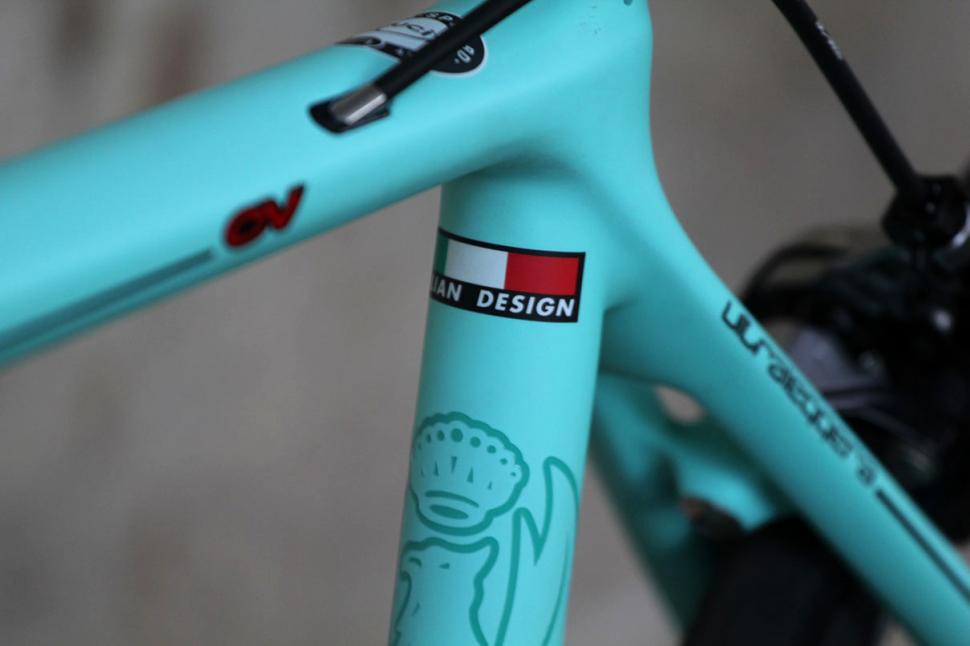


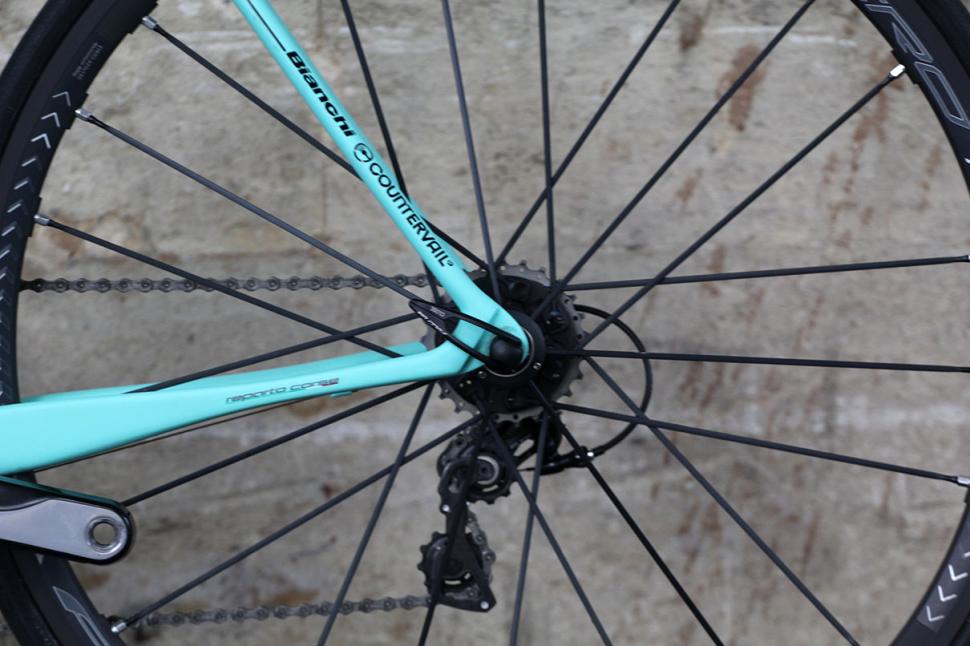


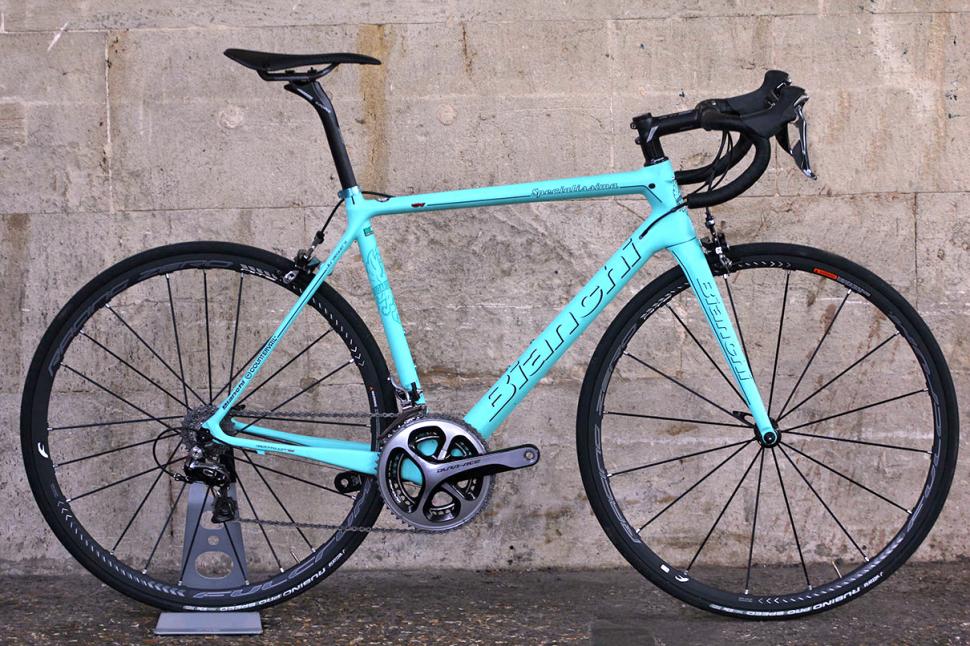
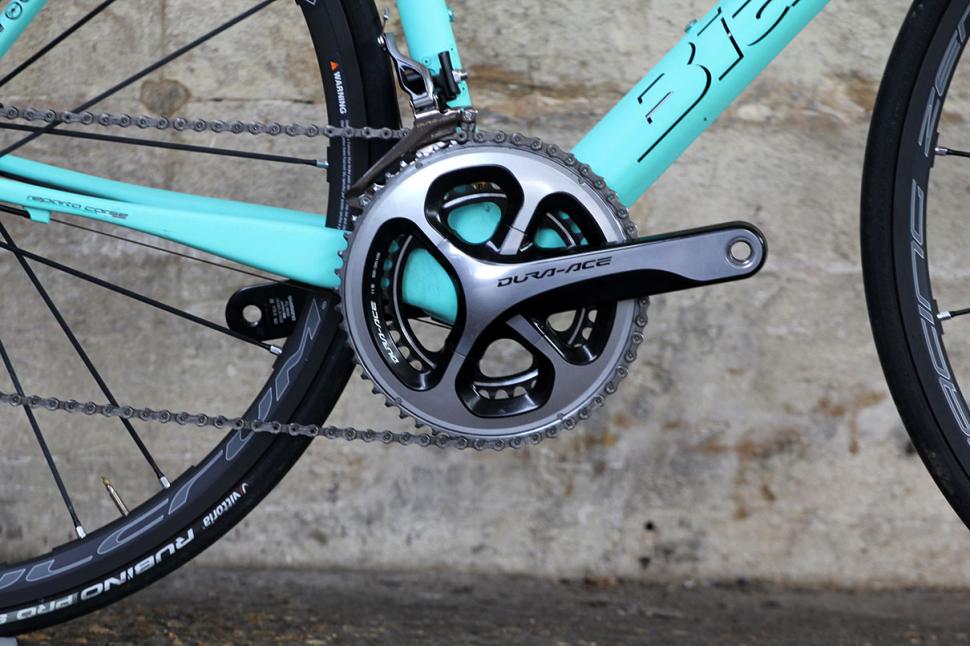


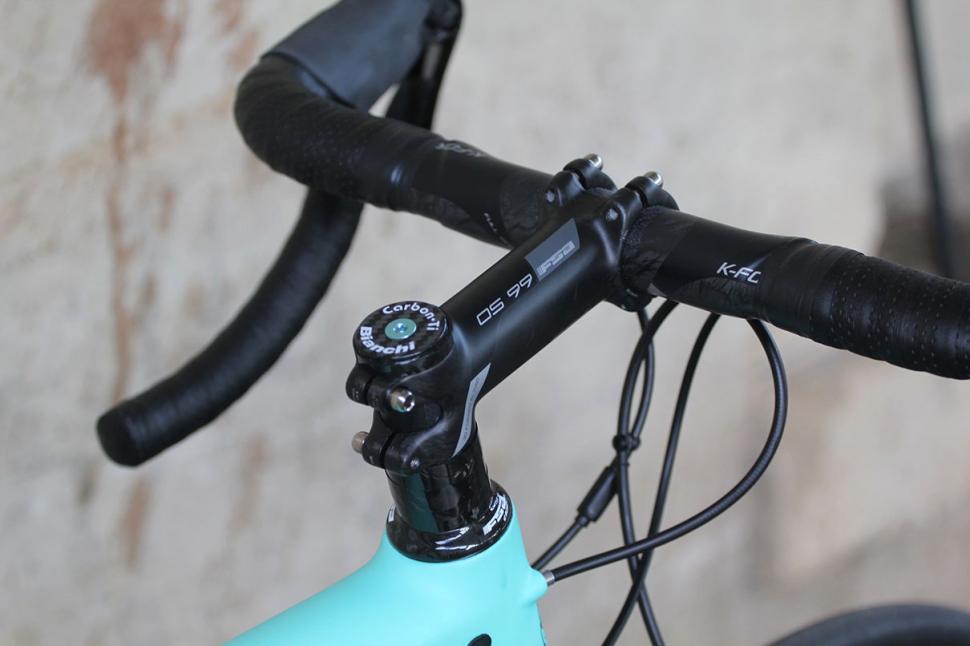
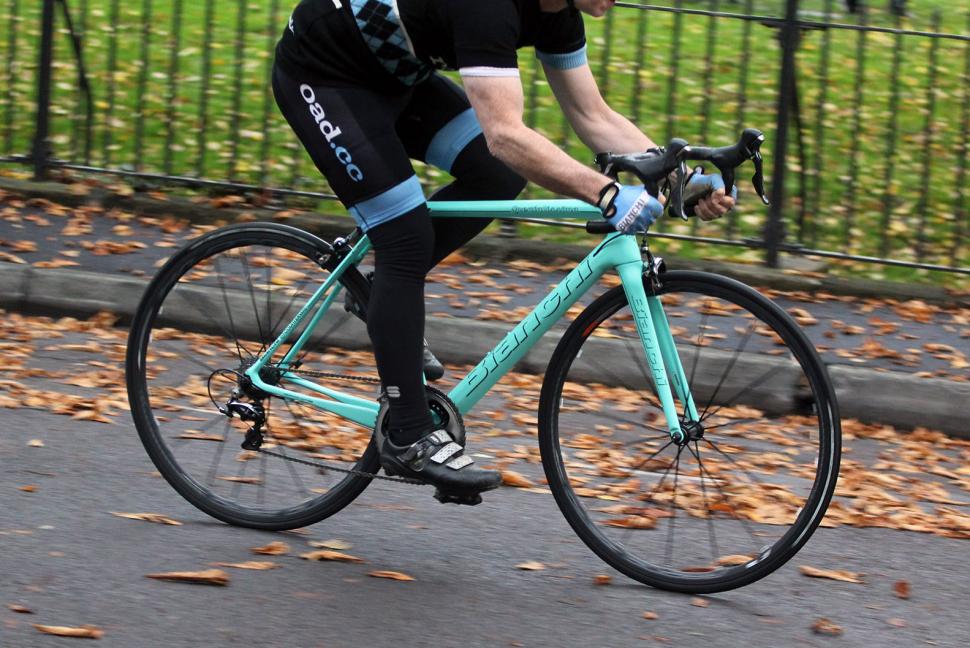
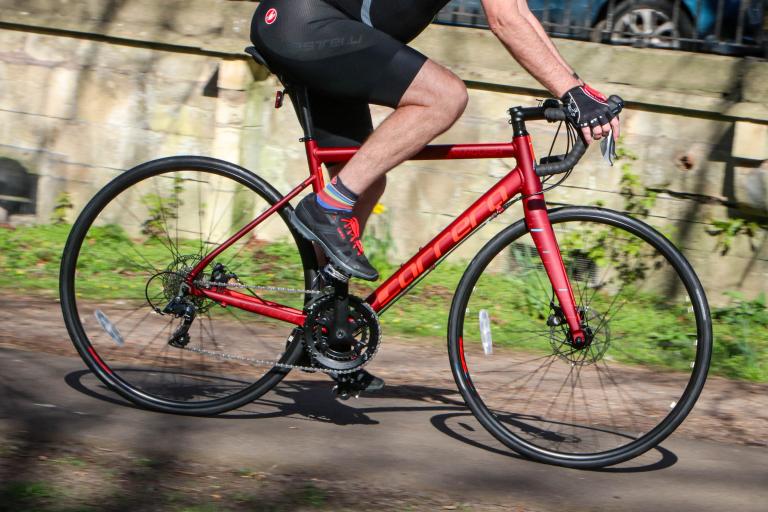



Add new comment
9 comments
Beautiful bike ! Brilliant move to put Dura-Ace on it ,and piss off the clunky Campag .
Or, if you only have a couple of grand free, you can get a Bianchi Sempre Pro, identical geometry, good enough to be ridden in the Tour a couple of years ago.
Was the Sempre Pro ridden in the Tour? I own one (with Di2) and was totally unaware of this. I haven't seen any evidence that it was, either, so please let me know if you have some!
The Sempre Pro was never ridden in the tour. It was used in the Giro by Androni Giocattoli in 2013 and 14.
I stand corrected! Apologies.
Finally a Bianchi that I actually like the look of.
Sorry im going to be that guy. Specialissima - most special.
Mechanical Dura Ace is not 'most special'. Besides that Dura Ace cranksets are just really ugly.
I so want one of these........Super Record EPS............NURSE!!!!
Dear Santa, ive been a good boy and my Centaur groupset is on its last legs........